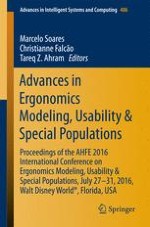This book focuses on emerging issues in ergonomics, with a special emphasis on modeling, usability engineering, human computer interaction and innovative design concepts. It presents advanced theories in human factors, cutting-edge applications aimed at understanding and improving human interaction with products and systems, and discusses important usability issues. The book covers a wealth of topics, including devices and user interfaces, virtual reality and digital environments, user and product evaluation, and limits and capabilities of special populations, particularly the elderly population. It presents both new research methods and user-centered evaluation approaches. Based on the AHFE 2016 International Conference on Ergonomics Modeling, Usability and Special Populations, held on July 27-31, 2016, in Walt Disney World®, Florida, USA, the book addresses professionals, researchers, and students dealing with visual and haptic interfaces, user-centered design, and design for special populations, particularly the elderly.
